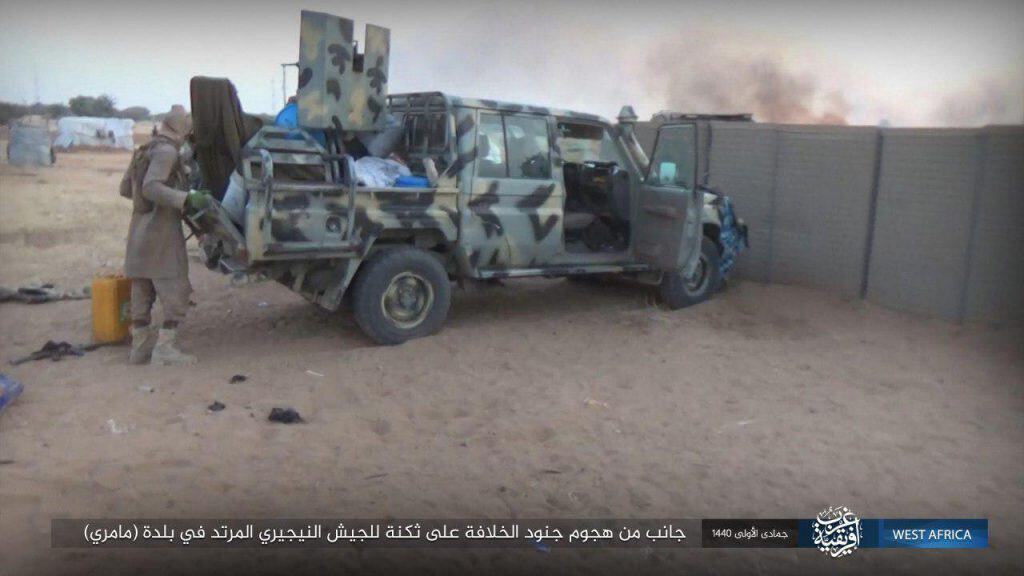
Raids conducted by the Islamic State’s West Africa “province” (ISWA) have forced thousands of civilians to flee their temporary homes in northeastern Nigeria this week.
On Jan. 13, ISWA’s jihadists targeted a military base near the town of Magumeri in the state of Borno. The following day, ISWA assaulted Rann, a makeshift town for displaced persons that was controlled by the military. Rann sits close to Nigeria’s border with Cameroon.
A Nigerian military source confirmed to Reuters that Rann had been overtaken by ISWA on the night of Jan. 14. “The terrorists have invaded Rann, they’ve taken over, our guys are retreating,” the unnamed Nigerian military man said.
ISWA then ransacked the town, forcing thousands of men, women and children to flee for Bodo in nearby Cameroon.
“Our team in Bodo estimates that some 8,000 people arrived yesterday, and we expect several thousand more may come today,” Hugues Robert, the program manager in Nigeria for Doctors Without Borders/Médecins Sans Frontières (MSF) said in a statement on Jan. 16. “We are preparing to assist 15,000 people with food, water, and medical care over the coming days. Many were in a state of shock and were clearly distressed by what they had witnessed. Now they have lost all that they have and need absolutely everything.”
There is often confusion in the reporting on the region, with some accounts referring to the ISWA jihadists in Rann and elsewhere as members of Boko Haram. ISWA and Boko Haram have some common roots, but the two are currently separate organizations. Still, it is possible that they cooperate in some operations and battles, as the situation is often murky.
Boko Haram’s leader, Abu Bakr Shekau, swore allegiance to Abu Bakr al-Baghdadi in Mar. 2015 and his fealty was accepted by the Islamic State’s spokesman. For a time, Shekau was Baghdadi’s main representative in West Africa — at least nominally. After a leadership dispute boiled over in 2016, the Islamic State named Abu Musab al Barnawi as the wali, or governor, of its West Africa “province.”
The US State Department subsequently designated ISWA as a terrorist organization in early 2018, noting that the two groups had “split.” Barnawi, who is “the son of Boko Haram founder Mohammed Yusuf” and was formerly the group’s spokesman, was also added to the US government’s list of designated terrorists as head of ISWA.
Although it is likely that there are aspects of the relationship between ISWA and Boko Haram that remain out of public view, the distinction between the two is important. ISWA has evolved into an especially lethal threat in northeastern Nigeria. And the group is marketing itself as an alternative to the Nigerian state, albeit one that seeks to govern under an especially draconian version of sharia.
On Jan. 15, for instance, ISWA released a 27-minute video dedicated to hijrah (migration) and waging jihad. The production opened with footage of ISWA’s men punishing supposed wrongdoers by throwing a man (presumably a homosexual) off the roof of a building, chopping off the hands of thieves, and beheading two other alleged transgressors. Such scenes are reminiscent of the images produced by the Islamic State in Iraq and Syria early on in its reign of terror.
Like the Islamic State mother organization, ISWA portrays itself as a religiously righteous actor standing against the rest of the world. One brief clip at the video’s outset shows an American flag (seen below) standing in front of many other banners, including both Sunni and Shiite Islamist and jihadist groups that oppose the Islamic State. The flags wave in unison from side to side, thereby emphasizing the supposed unity between America and various other actors. This messaging is not realistic, of course, as the banners represent wholly distinct entities, some of which oppose one another and especially the US.
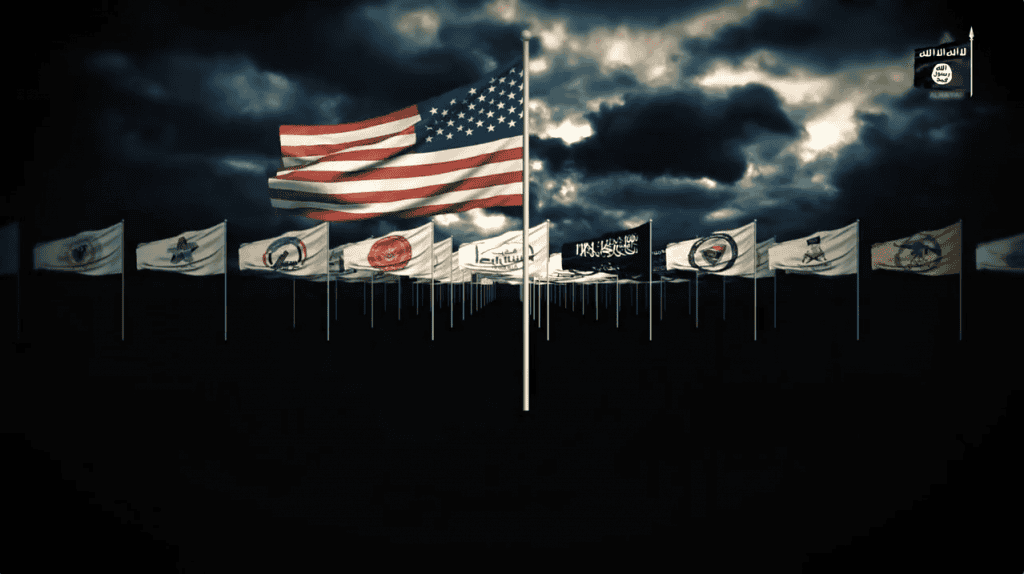
However, the video underscores ISWA’s long-term desire to build an emirate in the region. It remains to be seen if the group can hold onto the territory it contests. In the meantime, the jihadists are taking the fight to the Nigerian military.
In late December, ISWA seized the town of Baga, capturing and destroying a number of Nigerian military vehicles. The Islamic State arm is clearly targeting the military both to undermine its enemies and to acquire spoils that can be used to fuel its jihad.
Military spoils are regularly featured in ISWA’s propaganda. After raiding the base in Magumeri, the Islamic State’s Amaq News Agency released a short video documenting the battle. A screenshot from the Jan. 14 Amaq video can be seen below:
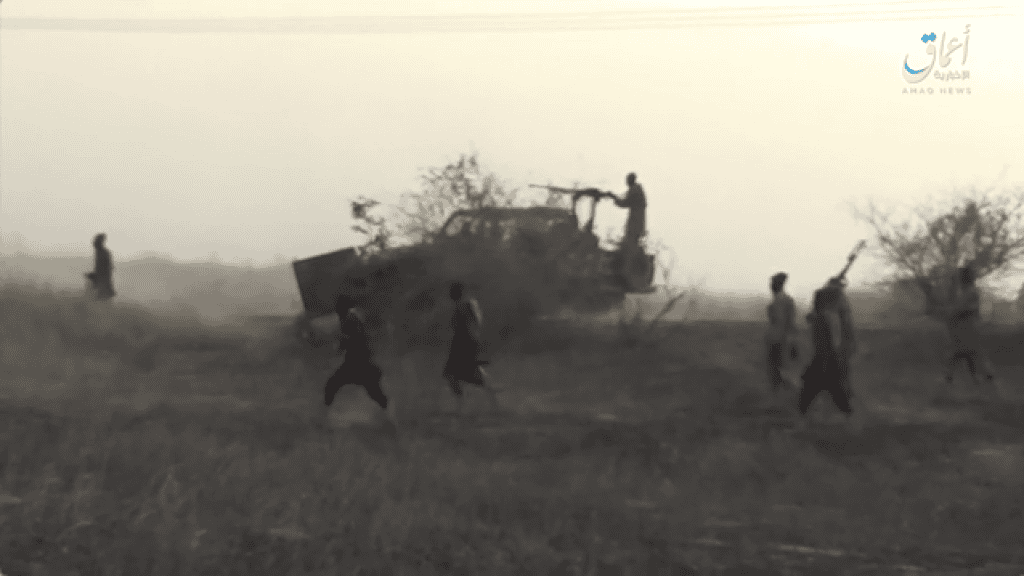
There is dearth of information on the attack in Magumeri, as reporting from the region is often unavailable or thinly-sourced. The Nigerian media barely reported on the assault, and there was again some confusion between ISWA and Boko Haram.
The Islamic State itself has added to the confusion by referring to the town as Mamari or Mamuri. In addition to the Amaq video, ISWA has produced a number of photos from its assault in Magumeri. The images, some of which can be seen below (and one at the top of this article), have been disseminated on the usual Islamic State social media channels.
In a separate incident this week, ISWA also attacked the Nigerian Army in Gajiram. On Jan. 16, the Islamic State reported that loyalists of the self-declared caliphate had struck an Army barracks in the town. Although the military claims to have repelled the attack, it is clear that ISWA’s offensive throughout the region is far from over.
ISWA photos from the raid on a Nigerian military base in Magumeri:
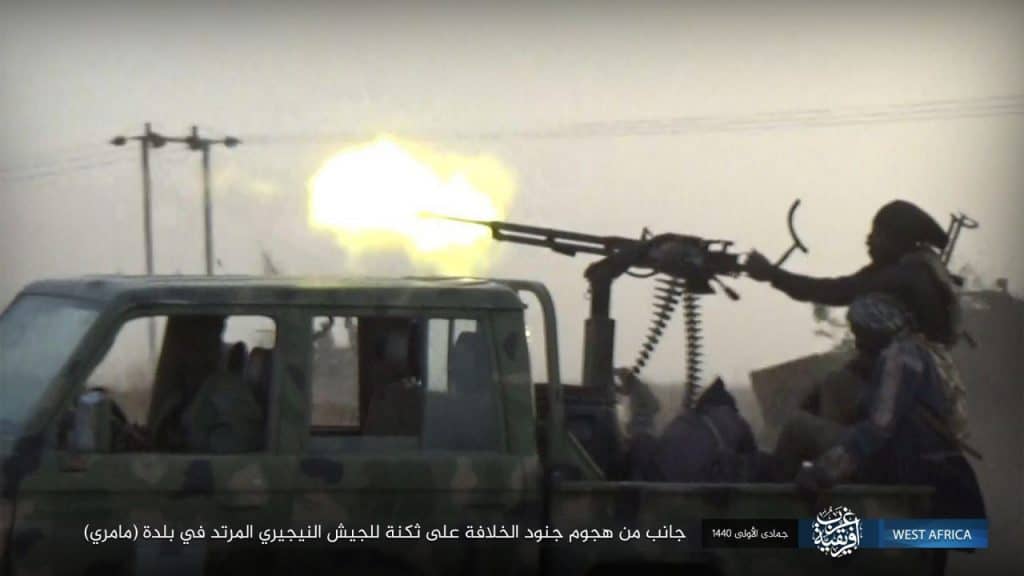
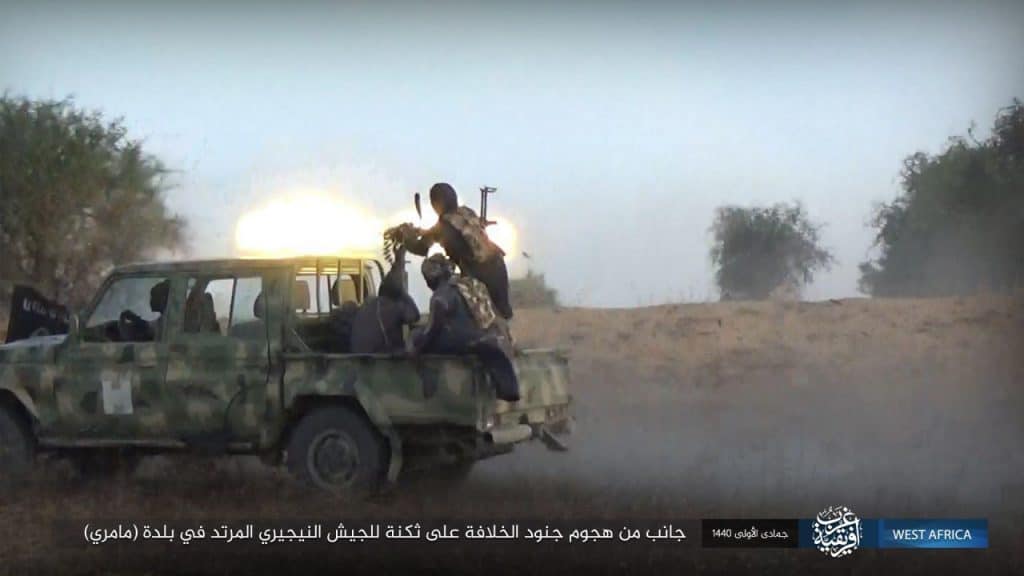
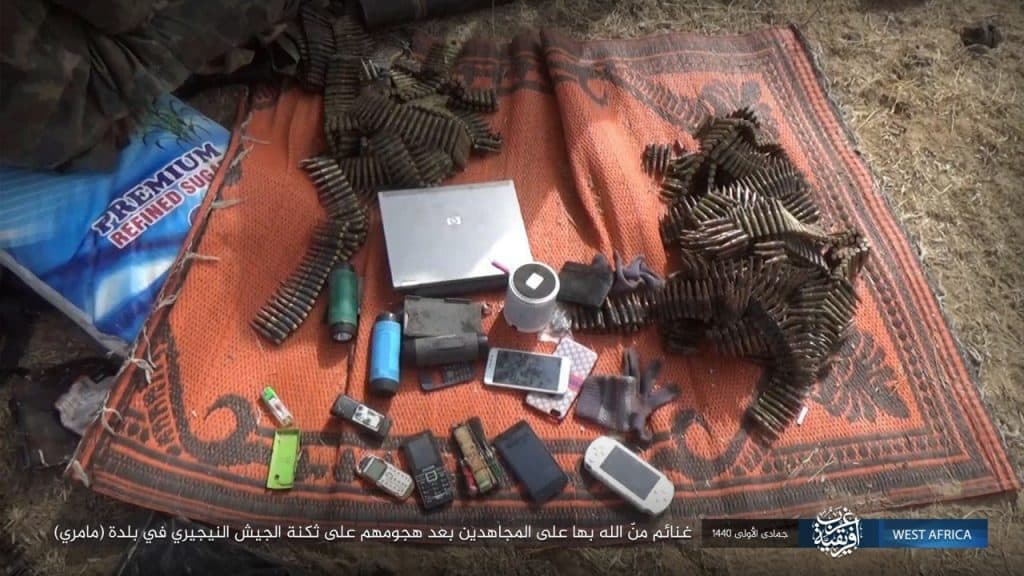
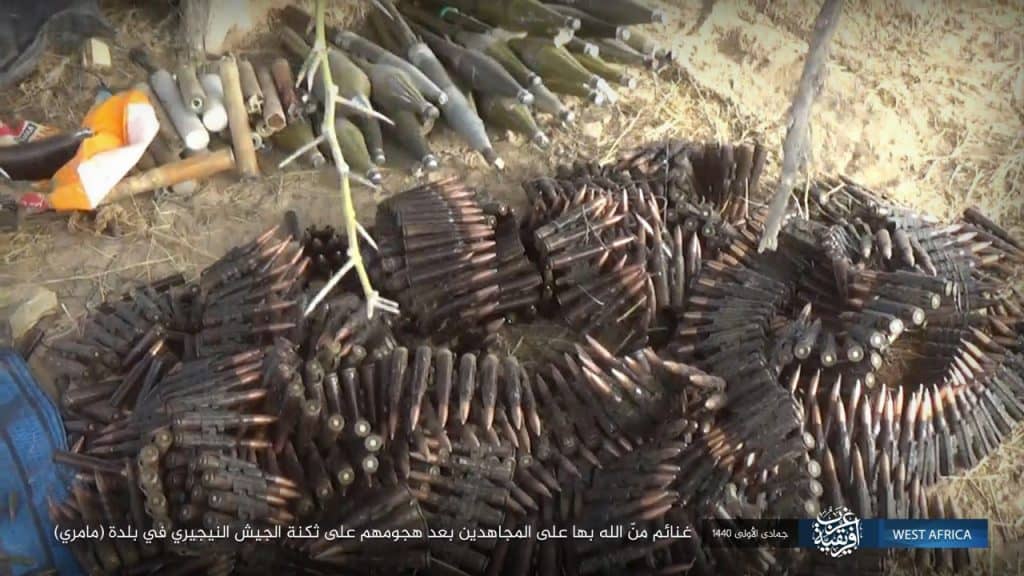
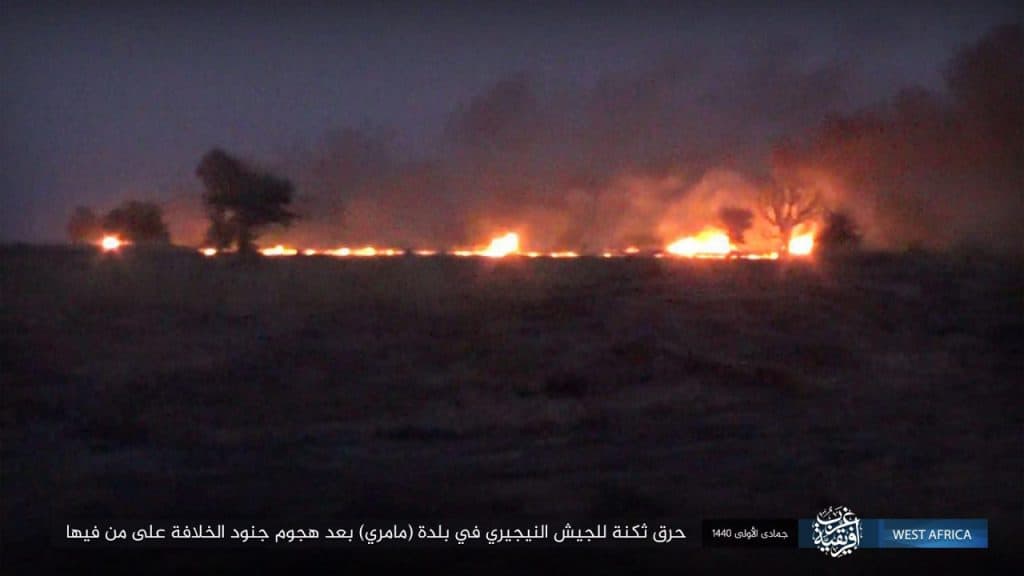








2 Comments
To prosecute a war cost money. To take on Boko Haram effectively, you have to know their source of funding and block it adequately. There obviously must be people in the North East that are aiding them. The faceless people must be found out and dealt with else the war will continue for a long time.
send in the b-52 end of story!